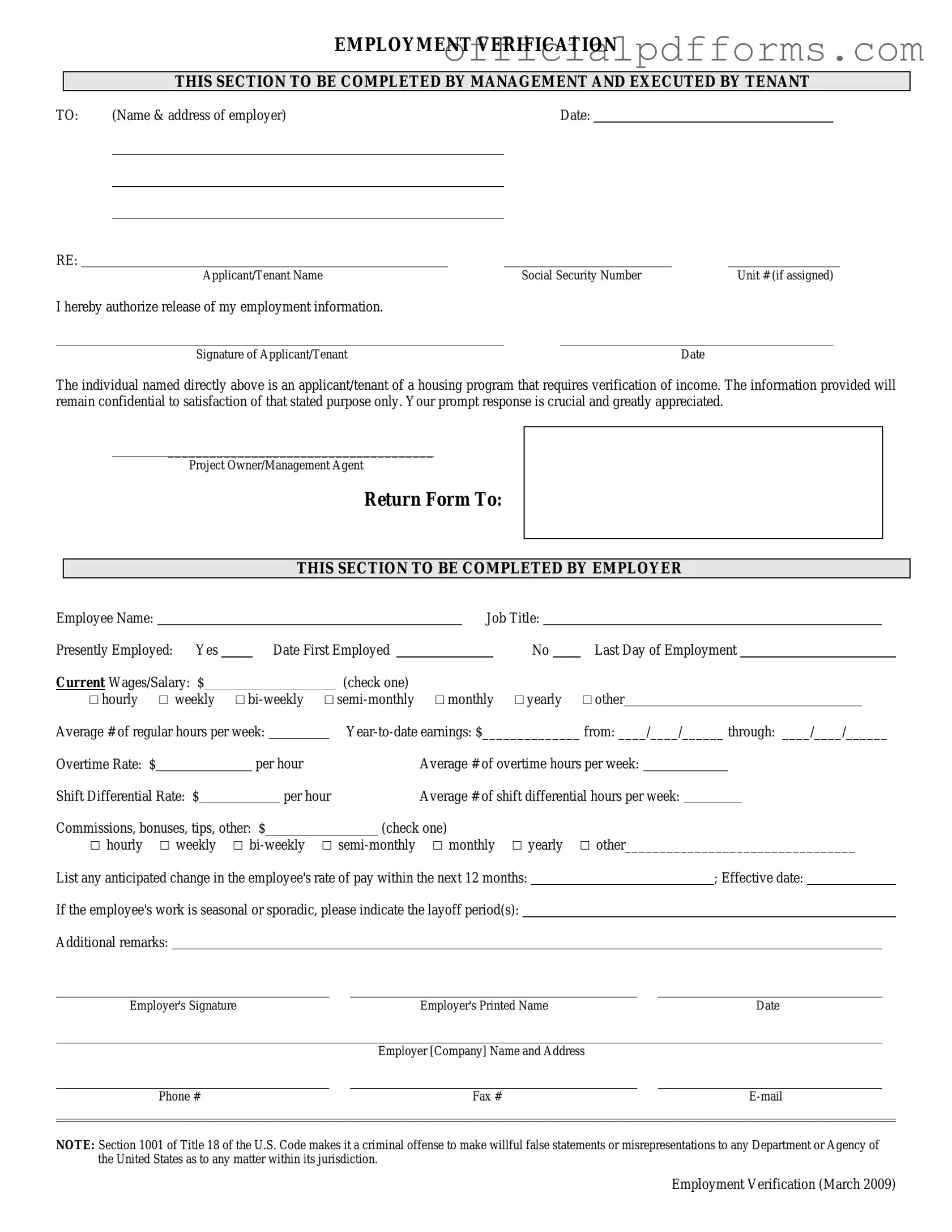An Employment Verification Form is a document used to confirm an individual's employment status. Employers or third parties may request this form to verify details such as job title, dates of employment, and salary. It serves as an official record that can be used for various purposes, including loan applications, rental agreements, or background checks.
Various parties may request an Employment Verification Form, including:
-
Landlords or property management companies when applying for rental housing.
-
Financial institutions for loans or mortgages.
-
Employers during the hiring process to confirm previous employment.
-
Government agencies for benefits or assistance programs.
The form typically includes several key pieces of information, such as:
-
Employee's name and contact information.
-
Employer's name and contact details.
-
Job title and description of duties.
-
Dates of employment, including start and end dates.
-
Salary or hourly wage, if applicable.
-
Reason for leaving, if applicable.
To obtain an Employment Verification Form, you can follow these steps:
-
Contact your current or former employer's human resources department.
-
Request the form directly from the employer, either in person or via email.
-
Check if your employer has an online portal where you can access the form.
In most cases, there is no fee for obtaining an Employment Verification Form. Employers usually provide this service as part of their HR functions. However, some third-party verification services may charge a fee if they are conducting the verification on behalf of another party.
The processing time for an Employment Verification Form can vary. Generally, it may take anywhere from a few days to a couple of weeks, depending on the employer's response time and internal processes. It is advisable to request the form well in advance of any deadlines to ensure timely verification.
